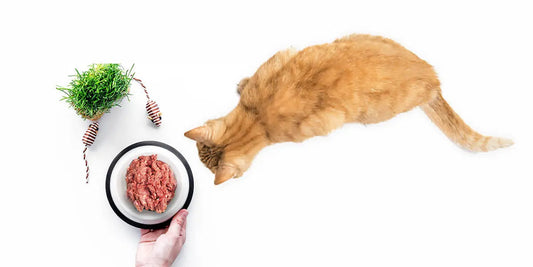
Yes, Vegetables for Dogs!
Written by Steve Brown

I always strive to make canine diets complete and balanced, using whole foods and that includes vegetables.
Some people who feed “prey-model diets” think that vegetables don’t belong in the canine diet, and question my recommendation of feeding vegetables to dogs, and a much lesser amount for cats. They are wrong. Vegetables and other plant matter were part of the dog’s ancestral diet. Vegetables provide essential nutrients, including fiber, minerals, and vitamins. Without the plant matter providing those nutrients, an all-meat diet would need supplements. Vegetables can also help protect against certain forms of cancer.
Vegetables, Fruits, and Grasses are Part of the Canine Ancestral Diet
To be clear, there is no one ancestral diet. Along with many other factors, our dogs’ ancestors (and their diets) varied tremendously by location, time of year, sex, health status and availability of prey and other foods. However, we have gathered enough data to make some rather detailed conclusions.
Our dogs’ ancestors were probably always aware of the possibility of starving to death and overlooked no food—they ate anything and everything that could be remotely considered edible. While many people say, “My dog will eat anything,” the modern dog is not the same as the ancestral dog in the wild. My dogs can be picky and never worry about starving to death.
Ancestral dogs primarily ate whole prey animals, including all the organs and glands and stomach contents. They also ate fruit, nuts, grasses and even feces[i].
Vegetables Provide Important Nutrients for Dogs
All wild dogs and cats consumed non-digestible or poorly-digestible parts of the prey animal, like parts of the coat, skin, and feathers. Commercial 100% meat-based diets – those without any plant matter — do not contain the poorly-digestible parts of the prey, and therefore there is almost no roughage and no fiber in the diet. Diets without roughage or fiber are not ancestral-type or prey-model diets and are not healthy for most dogs and cats.
In addition to being the only source of fiber, vegetables and plant matter are usually the only source of antioxidants and other phytochemicals. They are also a good source of enzymes and are often the best available food source of critical nutrients including folic acid, thiamine, potassium, magnesium, and manganese.
Without feeding plant matter, you have to add mineral and vitamin supplements or you end up with a nutrient-deficient diet.
Vegetables For Dogs Protect Against Cancer
A healthy gut microbiome is essential. Recent studies discovered how bacteria feed on an unusual sugar molecule found in leafy green vegetables. This finding suggests that leafy greens are essential for feeding good gut bacteria, limiting the ability of bad bacteria to colonize the gut by shutting them out of the prime ‘real estate.’
Vegetables may protect against certain forms of cancer in dogs. We’ve seen studies on this in humans, but there are few studies with dogs because they are expensive and not in the profit interest of the big companies who can afford such studies. One study showed that Scotties fed either leafy green or yellow-orange vegetables at least three times a week were 70% to 90% less likely to develop bladder cancer than their cohorts who were not fed vegetables.[ii]
In Dr. Karen Becker’s and my formulation classes, we build beef and bone-in chicken recipes with and without vegetables and show the nutrient differences. For those who like to see the numbers, here are the data. We use the more demanding of the US (AAFCO) and European (FEDIAF) standards. Pay particular attention to the numbers in red.

[i] References in Unlocking the Canine Ancestral Diet, Dogwise Publishing, 2010; pp 5-11.
[ii] Bladder Cancer Study- Final Report: What Every Scottie Owner Needs To Know © Barbara Loudsbury PhD 2005
© Marcia Dawson, DVM 2005
Source: First Published in STCA Bagpiper #3 2005


